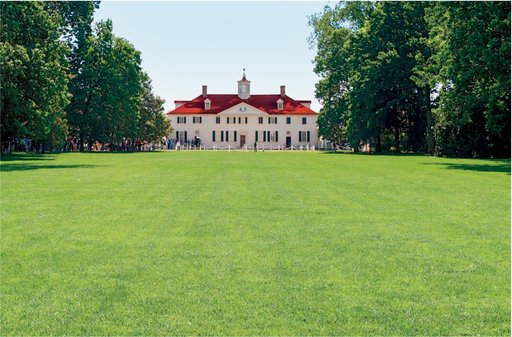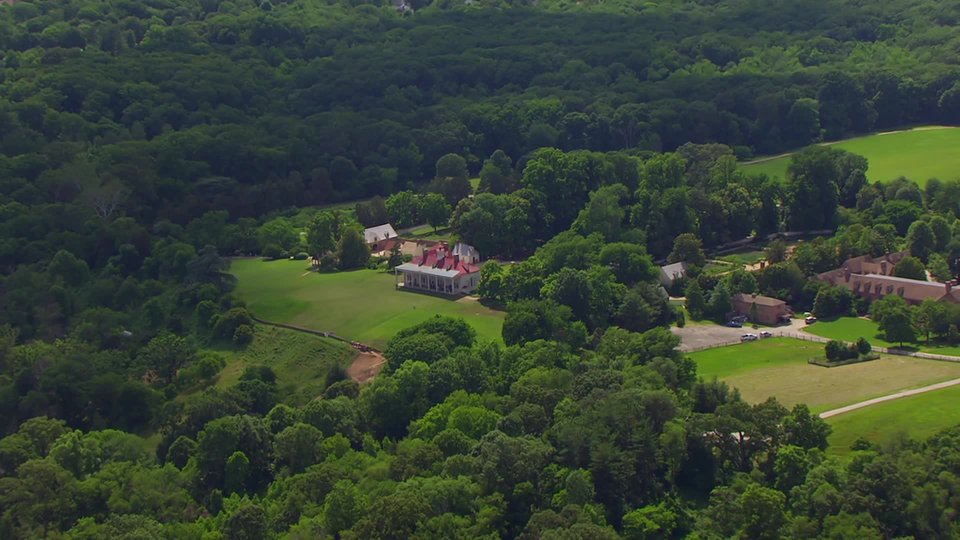LearningfromtheLawn
ThegardenstellushowWashingtonusedhisland.Hegrewcrops.Heplantedexoticflowers.Heshowedoffhiswealthandpower.Whatelsecanwelearnbystudyingtheland?Let’slookatWashington’sbowling green.
Abowlinggreenisanareaofcloselymowedgrass.TheoneatMountVernonlookslikeahugefrontlawn.Thatmaynotseemlikeabigdeal.Yet,inthe18th century,landwasexpensiveandprecious.Mostpeopleusedtheirlandforotherpurposes,like farming.
Washington,however,chosetokeep
atidylawnratherthancultivateitwithcrops.Itshowedvisitorsthathehadmorethanenoughlandandmoney.Hecouldevensetasidesomelandjustforshow.Thisisanotherexampleofnatureactingasaprimarysource.Ittellsusaboutaperson,aplace,andaperiodin time.
Nowlookmoreclosely.Remember,inWashington’stime,therewerenolawn mowers.Whokeptthelawnsoneat?ItfelltoWashington’senslavedlaborerstodragaheavyrolleracrossthegrassandthenuseabladetocutitbyhand.Thisrequiredalotofphysical labor.

MountVernon'sbowlinggreenisalarge,manicured lawn.
aviewofMountVernonfrom above
LearningfromtheLand
WhenIvisitedMountVernon,Ilookedcloselyatthegardens.Ilearnedaboutthehistoryoftheplacethroughthem.Yet,thegardensareonlyastartingpoint!Icouldalsolookatthefields,theorchards,andtherivertheretogetmore clues.
Primarysourcescomeinmanyforms.Nowyouknowhownatureandthenaturallandscapecanbeusedtolearnaboutthe past.

